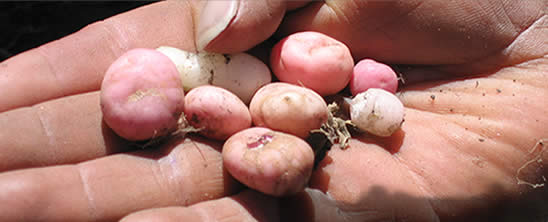|
|
In This Section:See Also:
|

BiodiversityAgro-biodiversity in Vicos: growing crops in an animated world
Potato: the main Andean cropHistory: Potato (Solanum tuberosum) originated in the highlands of South America, where it has been consumed for more than 8000 years. It is believed that the potato was first domesticated more than 6000 years ago near Lake Titicaca where the greatest diversity of wild species is currently found. Spanish explorers brought the plant to Europe in the late 16th century as a botanical curiosity. By the 19th century it had spread throughout the continent, providing cheap and abundant food for the workers of the Industrial Revolution.Nutrition: A single medium-sized potato contains about half the daily adult requirement of vitamin C. Other staples such as rice and wheat have none. Potato is very low in fat, with just 5 percent of the fat content of wheat, and one-fourth the calories of bread. Boiled, it has more protein than maize, and nearly twice the calcium. Global production: Today, potato is the fourth most important food crop in the world, with annual production approaching 300 million tons. More than one-third of the global potato output now comes from developing countries, up from just 11 percent in the early 1960s. The International Potato Center (CIP for its abbreviation in Spanish) maintains the world's largest bank of potato germplasm, including some 1500 samples of about 100 wild species collected in eight Latin American countries and 3800 traditional Andean cultivated potatoes. The collection is maintained under the auspices of the FAO and is available to plant breeders worldwide free upon request. 


Source: CIP (www.cipotato.org)
|